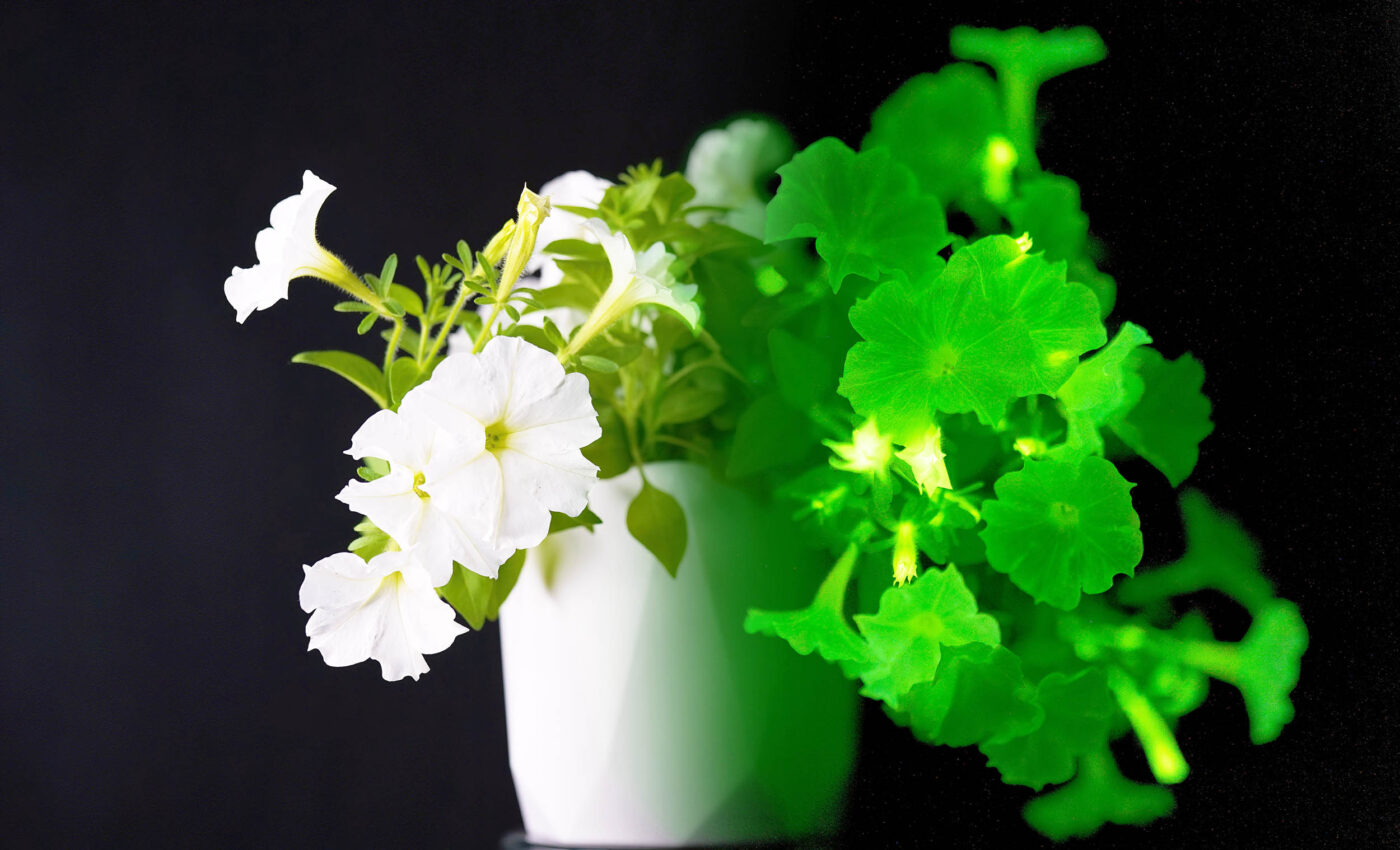
Bioluminescent plants can now provide eco-friendly lighting to every home
Researchers have identified a native plant gene that simplifies the process of creating bioluminescent plants, paving the way for plants to provide eco-friendly light to any home.
This gene varies among plant species and enables the conversion of living energy into organic light, revealing the complex rhythms of plant life through its evolving luminosity. Such advancements pave the way for using these glowing plants to brighten our homes, gardens, and public spaces in a sustainable manner.
The journey of bioluminescent plants
The study, supported by Light Bio, marks a significant step forward in the quest to integrate the enchanting glow of bioluminescent plants into daily life.
Light Bio, a leader in the development of these luminous plants, aims to deepen our connection with the natural world by bringing the magic of living light into our surroundings.
This research builds on previous findings that the glow of luminescent mushrooms is closely aligned with the central metabolic processes of plants.
By incorporating a gene native to plants, researchers have enhanced the synergy between light production and energy consumption, optimizing the natural illumination process.
How one gene changed the game
Traditionally, creating bioluminescent plants required the integration of five genes from fungi. The discovery that a single plant gene can replace two of these fungal genes revolutionizes the approach, offering a more efficient and versatile method for producing light-emitting plants.
The significance of this compact gene lies in its ability to link plant metabolism directly to light production, transforming the plant’s internal activities into a visible display of natural light.
This innovation has captured the imagination of the public, with Light Bio experiencing strong demand for its bioluminescent petunia, known as the Firefly™ Petunia. These plants emit a gentle glow akin to moonlight, enchanting all who see them.
Keith Wood, CEO of Light Bio, reports, “Sales for this remarkable plant have been impressively robust. We’ve had to ramp up production twice already to keep pace with the demand.”
Safety and sustainability: USDA’s seal of approval
The choice of petunia as the first product highlights its popularity and suitability for genetic enhancement, with these plants now glowing up to 100 times brighter than was previously possible.
Following an independent review by the USDA, the Firefly Petunia has been deemed safe for cultivation and breeding throughout the United States. Priced at $29 USD per plant, it is available for purchase from Light Bio’s website, with shipping to all 48 contiguous states starting in April.
Looking ahead, Light Bio, in partnership with Ginkgo Bioworks, aims to develop plants that are ten times brighter and available in a wider range of varieties and colors. Beyond their visual appeal, these bioluminescent plants offer deep insights into plant molecular physiology, with potential applications in crop development and disease resistance.
The fusion of science, aesthetics, and environmental consciousness in bioluminescent plants represents a bright future for sustainable lighting and a deeper connection with the natural world. As we continue to explore the possibilities, these glowing plants stand as a testament to human ingenuity and the endless wonders of nature.
More about bioluminescent plants
As discussed above, bioluminescent plants, nature’s own light sources, offer an enchanting alternative to artificial lighting, merging ecological sustainability with aesthetic beauty.
These plants harness a unique gene to convert their metabolic energy into a soft, organic glow, illuminating their surroundings with the light of life itself.
This remarkable ability enhances the visual appeal of landscapes and living spaces and opens new doors in scientific research and environmental conservation.
Science behind the glow
At the heart of bioluminescent plants lies a revolutionary discovery. As discussed previously in this article, one specific gene, found naturally in certain plant species, that catalyzes the transformation of living energy into light.
This process, akin to the bioluminescence observed in fireflies and deep-sea organisms, is a testament to the incredible versatility and adaptability of nature.
Researchers have learned to manipulate this gene, optimizing the interplay between light production and energy utilization to create plants that glow more brightly and consistently than ever before.
Brightening our world with bioluminescent flora
The practical applications of bioluminescent plants stretch far beyond their novelty. From eco-friendly garden lighting to innovative interior design, these glowing plants offer a sustainable alternative to electrical lighting, reducing energy consumption and carbon footprint.
Furthermore, their use in public spaces can enhance safety and visibility without disrupting wildlife, as their gentle glow does not contribute to light pollution.
Bioluminescent plants and the future
The future of bioluminescent plants shines with potential. Advances in genetic engineering and biotechnology promise plants that glow more brightly and in a wider array of colors, opening up new possibilities for design and decoration.
Beyond aesthetics, the research into plant bioluminescence is unlocking deeper understanding of plant physiology and biochemistry, with implications for crop enhancement, disease resistance, and environmental monitoring.
Illuminating the path forward
In summary, bioluminescent plants stand at the intersection of beauty, science, and sustainability, offering a glimpse into a future where technology harmonizes with nature.
As we continue to explore and expand the capabilities of these luminous living lights, we find innovative solutions for environmental challenges, and bring a bit of nature’s magic into our everyday lives. The journey into the world of bioluminescent flora is just beginning, promising a brighter, greener future for all.
The researchers published the full study in the journal Science Advances.
—–
Like what you read? Subscribe to our newsletter for engaging articles, exclusive content, and the latest updates.
Check us out on EarthSnap, a free app brought to you by Eric Ralls and Earth.com.
—–













